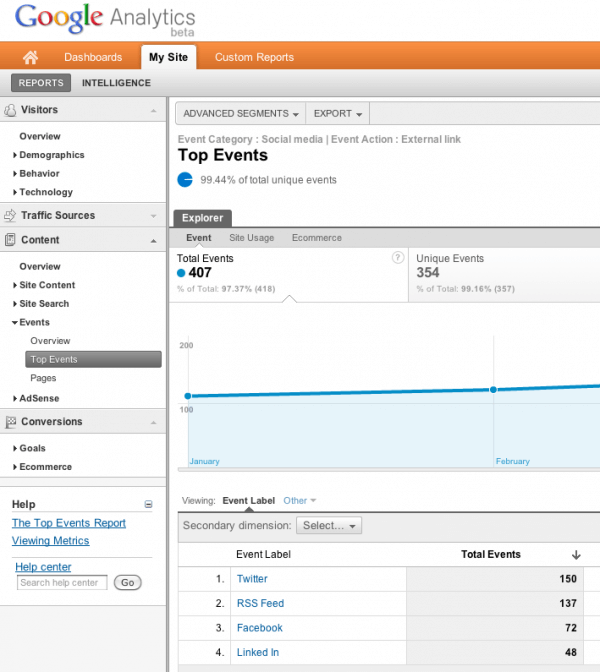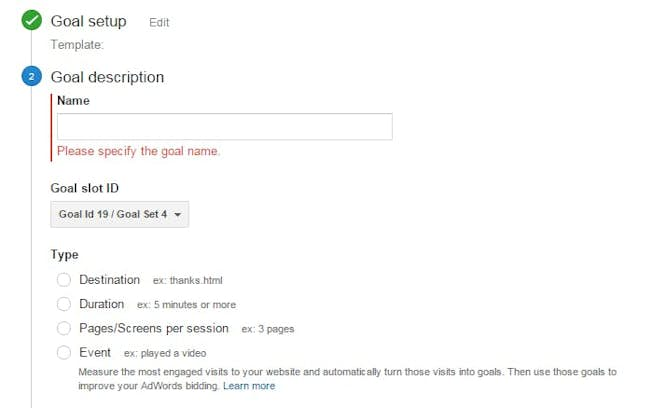Comprehensive List of What Data Is Google Analytics Goals Unable to Track
Comprehensive List of What Data Is Google Analytics Goals Unable to Track
Blog Article
Demystifying Google Analytics Limitations: Uncover What Data Goals Can not Track
In the realm of electronic analytics, Google Analytics stands as an effective device that provides useful understandings into website efficiency and individual behavior. From the ins and outs of user interaction with dynamic content to the intricacies of cross-device individual journeys, these constraints lost light on areas that may continue to be covered from standard analytics viewpoints.

Customer Communication With Dynamic Content
Individual interaction with vibrant web content plays a crucial duty in understanding individual habits on web sites and enhancing the total user experience. Dynamic web content refers to elements on a web page that can transform without the demand for a full page reload. This consists of interactive elements such as pop-ups, sliders, forms, and video clips that reply to individual actions in real-time. By tracking individual interactions with dynamic web content, site owners can get valuable understandings into user interaction, preferences, and habits.
Google Analytics provides different tools to track customer communications with dynamic material, such as occasion tracking and online pageviews. Occasion monitoring allows you to monitor certain user actions, like clicking a switch or seeing a video, offering data on how users connect with dynamic components.
Cross-Device Individual Journeys
Exactly how can modern analytics tools track the complex paths individuals take across numerous devices in their on-line trips? Cross-device individual journeys provide a significant challenge for tracking and analyzing customer actions properly. As users engage with apps or internet sites using various devices such as mobile phones, tablets, and desktop computers, it comes to be important to recognize how they relocate in between these platforms to optimize user experience properly.
Google Analytics encounters constraints in tracking cross-device customer trips because of personal privacy worries and technological restrictions - what data is google analytics goals unable to track. While it can supply understandings into individual tools' communications, tracking a smooth individual trip across multiple tools continues to be an obstacle. This constraint can lead to insufficient information and fragmented user insights, making it tough for organizations to develop a unified view of the consumer journey
To resolve this issue, companies can use advanced analytics devices that supply cross-device monitoring abilities, allowing them to get a much more alternative understanding of customer behavior. By leveraging these devices, services can connect the space in tracking cross-device individual journeys and maximize their electronic techniques for a smooth individual experience.
Offline Conversions and Attribution
As organizations navigate the difficulties of tracking cross-device user journeys, an additional pivotal element to think about is the realm of offline conversions and attribution in the world of information analytics. While Google Analytics supplies important understandings right into online individual actions, it falls short when it comes to tracking conversions that take place offline. This limitation presents a considerable obstacle for businesses that have both online and offline sales channels.
Offline conversions, such as acquisitions made in physical shops or with phone call centers, are necessary to understanding the full consumer journey. Without the ability to attribute these offline conversions to specific on the internet communications, businesses might have a hard time to accurately measure the effect of their electronic marketing efforts.
To resolve this space, organizations can check out alternative solutions such as incorporating CRM systems with on-line analytics tools or making use of unique discount codes that can be traced back to on-line projects. By linking the void between online and offline data, services best site can obtain a much more extensive understanding of their clients' actions and enhance their overall advertising approaches.
Individual Customer Identification
In the realm of data analytics, the capacity to precisely identify specific customers throughout various online touchpoints is a vital difficulty for services looking for to individualize and optimize their advertising strategies. While Google Analytics supplies beneficial understandings right into user actions and interactions, it falls short in enabling the identification of specific people due to personal privacy worries and technological restrictions. Google Analytics utilizes one-of-a-kind identifiers such as cookies to track individual sessions and behavior, yet these do not relate to identifying websites private customers in an individual sense.

Data From Secure Pages
Despite the boosting prevalence of secure web pages on internet sites, acquiring information from these encrypted resources offers an unique challenge for electronic analytics systems like Google Analytics. Safeguard pages, shown by HTTPS in the link, encrypt data traded between the user's browser and the internet site's web server to ensure about his privacy and protection. While this encryption is vital for safeguarding delicate information, it likewise positions limitations for tracking customer actions and gathering analytics data.
Google Analytics encounters obstacles in accumulating comprehensive details from safe web pages due to the encryption procedures in position. As an outcome, certain data factors such as referral resources, keyword searches, and even some individual interactions might not be fully captured when users access a website via a secure connection. This restriction can affect the precision and completeness of the data analysis, resulting in spaces in recognizing customer actions and preferences on safe and secure pages.
To navigate this difficulty, electronic analysts may require to discover alternate monitoring approaches or utilize other tools specifically made to collect understandings from safe and secure pages. By adapting methods to fit these restrictions, businesses can still acquire important analytics despite the constraints offered by encrypted links.
Verdict
In final thought, Google Analytics has restrictions in tracking customer interaction with vibrant material, cross-device individual trips, offline conversions, individual user recognition, and data from secure web pages. In spite of its valuable understandings, Google Analytics might not supply a total image of customer engagement across various touchpoints.
Customer interaction with dynamic content plays an important duty in understanding individual behavior on web sites and enhancing the total individual experience. By tracking individual communications with vibrant material, website proprietors can get important understandings right into user engagement, choices, and behaviors.
Google Analytics utilizes special identifiers such as cookies to track customer sessions and habits, but these do not equate to identifying specific users in an individual sense.
As an outcome, specific data points such as recommendation sources, keyword searches, and also some individual communications might not be totally recorded when individuals access an internet site via a protected connection.In final thought, Google Analytics has limitations in tracking individual interaction with vibrant content, cross-device customer journeys, offline conversions, specific customer identification, and data from safe pages.
Report this page